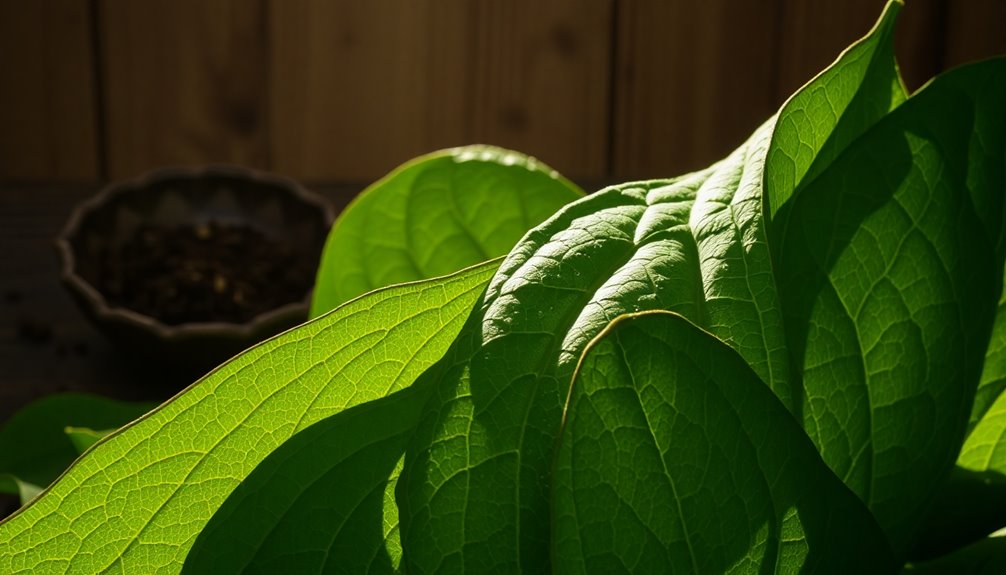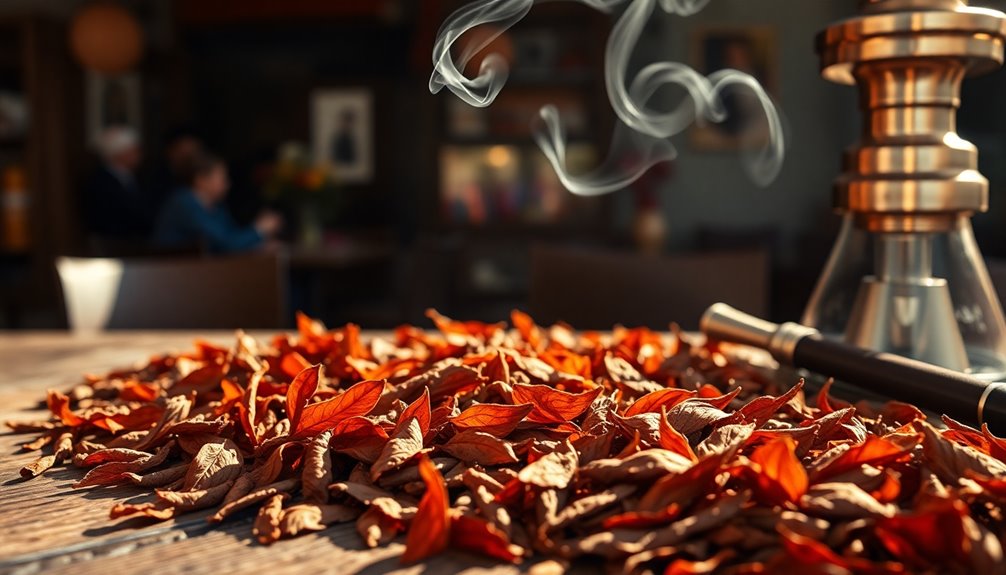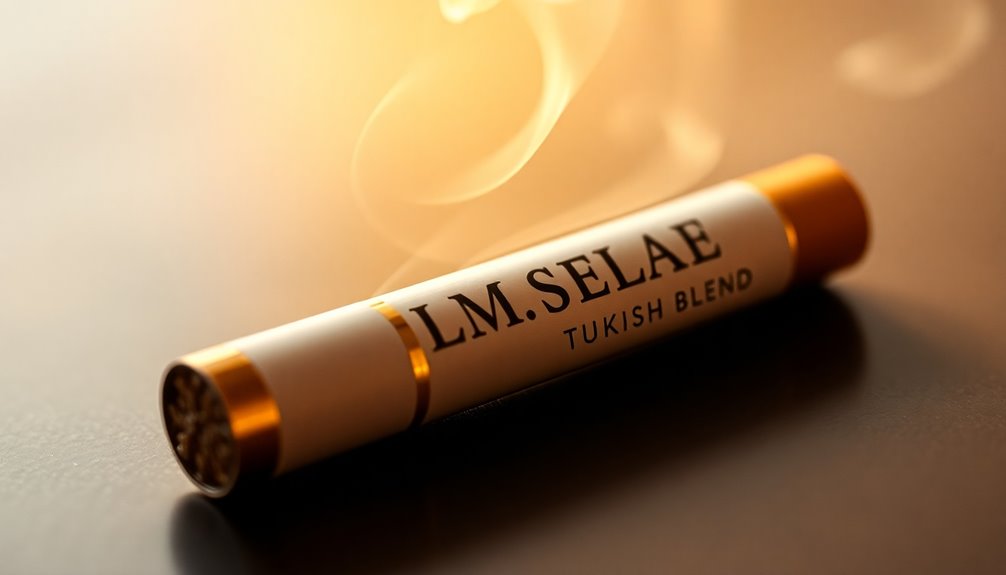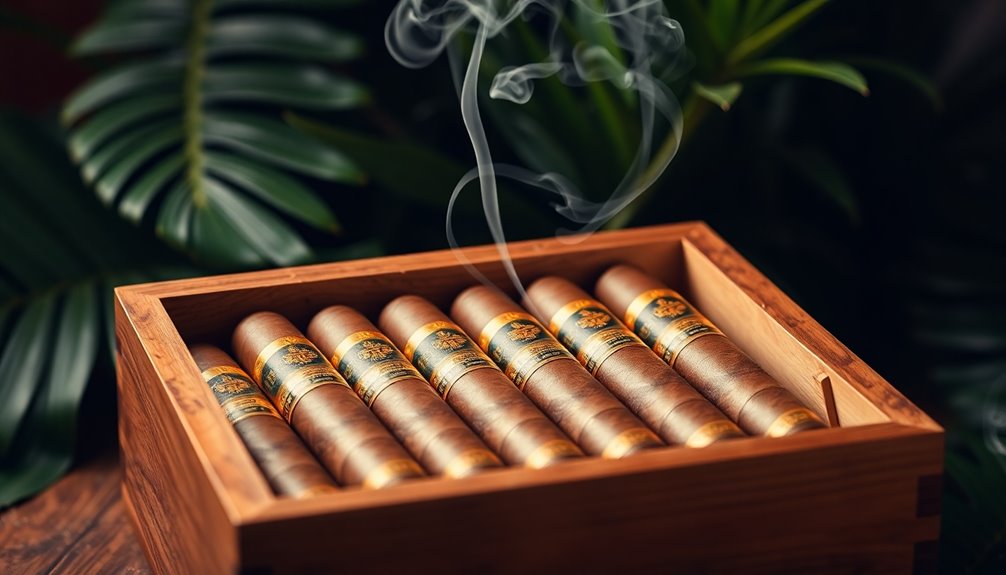Turkish tobacco has a fascinating history that dates back to the late 16th century in the Ottoman Empire. It started as a household crop but quickly evolved into a key economic player, ranking as Turkey's 11th largest cigarette exporter in 2022. Renowned for its mild, aromatic flavor, Turkish tobacco offers a smooth smoking experience, often used in hookahs and popular among pipe smokers. While it holds cultural significance, challenges like health issues and environmental concerns loom large. There's a lot more to explore about its journey and modern appeal, so let's uncover the layers behind this storied industry.
Key Takeaways
- Turkish tobacco has historical roots dating back to the late 16th century, introduced by European merchants in the Ottoman Empire.
- It contributes significantly to Turkey's economy, with around 600,000 farmers cultivating tobacco and exports valued at $494 million in 2022.
- Known for its mild and aromatic flavor, Turkish tobacco is popular among pipe smokers and is often blended with other varieties.
- Cultural practices, such as hookah use, have cemented Turkish tobacco's place in traditional smoking rituals and lifestyle.
- Current challenges include human rights issues, environmental risks, and ineffective tobacco control policies amid a high smoking prevalence among adults.
Historical Origins of Turkish Tobacco

Tobacco took root in the Ottoman Empire in the late 16th century, introduced by European merchants who recognized its potential. Initially brought to Europe by Portuguese traders after Christopher Columbus encountered it in the Caribbean, tobacco arrived in the Ottoman realm during the 1550s, believed to offer medicinal benefits.
By 1583, it was first planted in Milas, a town in Anatolia, marking the start of its cultivation. You'll find that tobacco quickly spread across the empire, initially cultivated as a household crop before becoming a specialized agricultural activity. Regions like Xanthi and Giannitsa in present-day Greece and North Macedonia saw early tobacco farming, while the crop soon expanded to the Balkans and eastern Anatolia.
Despite its popularity, domestic production struggled to meet the growing demand, leading to imports from Iran. Notably, the British played a significant role in popularizing tobacco in Istanbul around the 1600s. This introduction not only transformed agricultural practices but also began to weave tobacco into the social fabric of the Ottoman Empire, laying the groundwork for its enduring significance in Turkish culture. Furthermore, the unique characteristics of Turkish tobacco contributed to its rise in prominence, especially in cigarette blends across the globe.
Economic Significance and Impact

The rise of tobacco cultivation in the Ottoman Empire set the stage for its economic significance in modern Turkey. Today, tobacco exports contribute about 1% to Turkey's total export value, highlighting its role in international trade.
While roughly 600,000 farmers grow tobacco, most manage small plots averaging less than half a hectare. This means the industry, despite its size, employs only 0.13% of the workforce, indicating limited job creation.
In 2022, Turkey ranked as the 11th largest exporter of cigarettes, valued at $494 million, with major markets including Iraq and the United States. However, as imports rise, the net export value diminishes. Turkey's net trade for cigarettes containing tobacco in 2022 reached $390 million, reflecting its strong export performance.
The fiscal impact is notable, with cigarette taxes generating approximately 6% of government revenue, although this share is declining due to economic diversification.
Tobacco production occupies just 1% of Turkey's cultivated land, with 82,250 tons produced in 2022. The government's support for tobacco farmers has become a significant financial burden.
As the economy modernizes, the reliance on tobacco for revenue and employment poses challenges, especially as land used for tobacco could be repurposed for food production.
Unique Characteristics and Uses

With its distinctive flavor profile and unique growing characteristics, Turkish tobacco stands out in the world of tobacco cultivation. You'll appreciate its mild, aromatic, and fruity flavor, featuring notes of loquats, licorice, honey, fig, and sometimes hints of cream or milk. This delightful taste is enhanced by the tobacco's high sugar content, which contributes a natural aroma and essences of brightness, grasses, and freshly baked bread, alongside floral notes.
Turkish tobacco plants produce smaller yet more abundant leaves than other types, thriving in diverse regions like Macedonia, Thrace, and the Black Sea Coast of Turkey. The soil conditions, ranging from sandy to volcanic, along with a cultivation period marked by warm, rainy weather, contribute to its unique qualities. Additionally, Turkish tobacco is known for its higher leaf count, which further enhances its unique flavor profile.
This tobacco is prized for its smooth smoking experience; it lights easily, burns evenly, and leaves a clean, almost white ash. You'll often find it blended with other tobaccos to enhance depth and strength.
Popular among pipe smokers and RYO enthusiasts, Turkish tobacco also shines in cigarette blends due to its mild, aromatic qualities, making it a favorite choice for many tobacco lovers.
Cultural Influences and Marketing

Cultural influences have shaped the way Turkish tobacco is perceived and consumed, blending tradition with modern marketing strategies. Introduced to the Ottoman Turks by the Spanish, tobacco quickly evolved in Turkey. The Ottomans developed their unique cultivation and curing methods, and the use of hookahs became a hallmark of Turkish tobacco consumption.
The local soil and climate also contributed distinct flavors and intensity to the tobacco, enhancing its appeal. Notably, different varieties of Turkish tobacco, such as Virginia and Burley, further enriched the diversity of products available in the market.
In the marketing realm, early cigarette brands like Murad, Helmar, and Fatima showcased pure Turkish tobacco, establishing a strong market presence. Brands such as Camel incorporated Turkish tobacco into their American blend cigarettes, which debuted in 1913, further popularizing its use.
Creative advertising campaigns, particularly for Murad, captured consumer attention and loyalty.
However, consumer preferences began shifting towards Virginia tobacco during and after World War I, prompting transnational companies to adapt. They introduced innovative products, including low tar and flavored cigarettes, to maintain market share.
As Turkish tobacco faced increased regulation, companies utilized strong distribution channels and digital marketing to navigate the changing landscape. This dynamic interplay of culture and marketing continues to influence Turkish tobacco's place in the modern world.
Current Challenges and Trends

Numerous challenges and trends are currently shaping the landscape of Turkish tobacco, impacting both its production and consumption.
You'll notice that human rights and labor issues remain a pressing concern, particularly with child labor in the supply chain. The industry's commitment to eradicating this by 2025 is vital, alongside efforts to improve occupational health and safety for workers. Additionally, collaboration among industry stakeholders is crucial for fostering transparency and dialogue to address these pressing issues.
However, non-compliance with minimum wage laws and societal inequalities, especially for women, continue to pose significant challenges.
Environmental risks are also a growing concern. Climate change threatens tobacco farming communities, and improper disposal of crop protection agents can harm local environments.
Fortunately, the industry is collaborating on initiatives to mitigate these impacts.
On the consumption side, the health consequences are alarming, with nearly one-third of Turkish adults smoking and significant youth usage.
Despite tobacco control policies implemented since 2004, smoking rates rose between 2012 and 2016, highlighting a need for stronger measures.
Protecting policymaking from industry interference remains a challenge, and addressing taxation issues is crucial to curb cross-border cigarette flows.
Ultimately, navigating these challenges is essential for the future of Turkish tobacco.
Frequently Asked Questions
What Are the Health Effects of Smoking Turkish Tobacco?
Smoking Turkish tobacco can lead to severe health issues.
You're increasing your risk of heart disease, lung cancer, and respiratory diseases, as tobacco contributes significantly to these conditions. Each puff heightens your chance of developing chronic illnesses and reduces your overall life quality.
Additionally, smoking can elevate your susceptibility to infections, particularly in the lungs.
It's crucial to understand these risks and consider the impact on your health when choosing to smoke.
How Does Turkish Tobacco Differ From Other Tobacco Varieties?
Turkish tobacco stands out due to its unique flavor profile and cultivation methods.
You'll notice its mild, aromatic taste with fruity notes, unlike the harsher profiles of many other varieties. It's sun-cured, enhancing its natural sweetness and aroma.
With smaller leaves and fewer carcinogens, it offers a gentler smoking experience. Its slow-burning properties and diverse uses in pipe smoking and roll-your-own cigarettes make it a favorite among many tobacco enthusiasts.
Are There Specific Regions in Turkey Known for Premium Tobacco?
Yes, there are specific regions in Turkey known for premium tobacco.
The Aegean Region stands out, particularly for its aromatic Izmir variety of Oriental tobacco.
You'll also find quality tobacco in the Black Sea Region, which produces sun-cured varieties.
While the Eastern and Southeastern Anatolia regions have historically produced lower quality tobacco, efforts are underway to improve standards.
What Is the Historical Role of Turkish Tobacco in Trade?
Turkish tobacco has played a significant role in trade since its introduction in the early 17th century.
You'll find that it initially faced bans but later became a vital source of tax revenue.
By the 19th century, the Ottoman government established monopolies to manage its production and distribution.
This led to increased foreign influence, particularly from Iranian merchants, who controlled substantial trade routes and significantly impacted the economic landscape of the region.
How Has Turkish Tobacco Influenced Global Cigarette Brands?
Turkish tobacco has significantly shaped global cigarette brands by introducing its aromatic Oriental variety, which initially dominated the market.
However, as you've probably noticed, a shift occurred towards American blends, driven by consumer demand for Virginia and Burley tobaccos.
This transition not only reduced the prevalence of Oriental tobacco in cigarettes but also influenced pricing strategies and marketing approaches, making American blends more appealing due to their lower costs and broader availability.
Conclusion
In exploring Turkish tobacco, you've uncovered a fascinating blend of history, culture, and economic significance. Its unique characteristics and traditional uses continue to captivate enthusiasts around the world, while modern marketing strategies keep it relevant. However, challenges like health concerns and competition from alternative products loom large. As you delve deeper into its story, you can appreciate not just its rich heritage but also the ongoing evolution that keeps Turkish tobacco appealing today.










